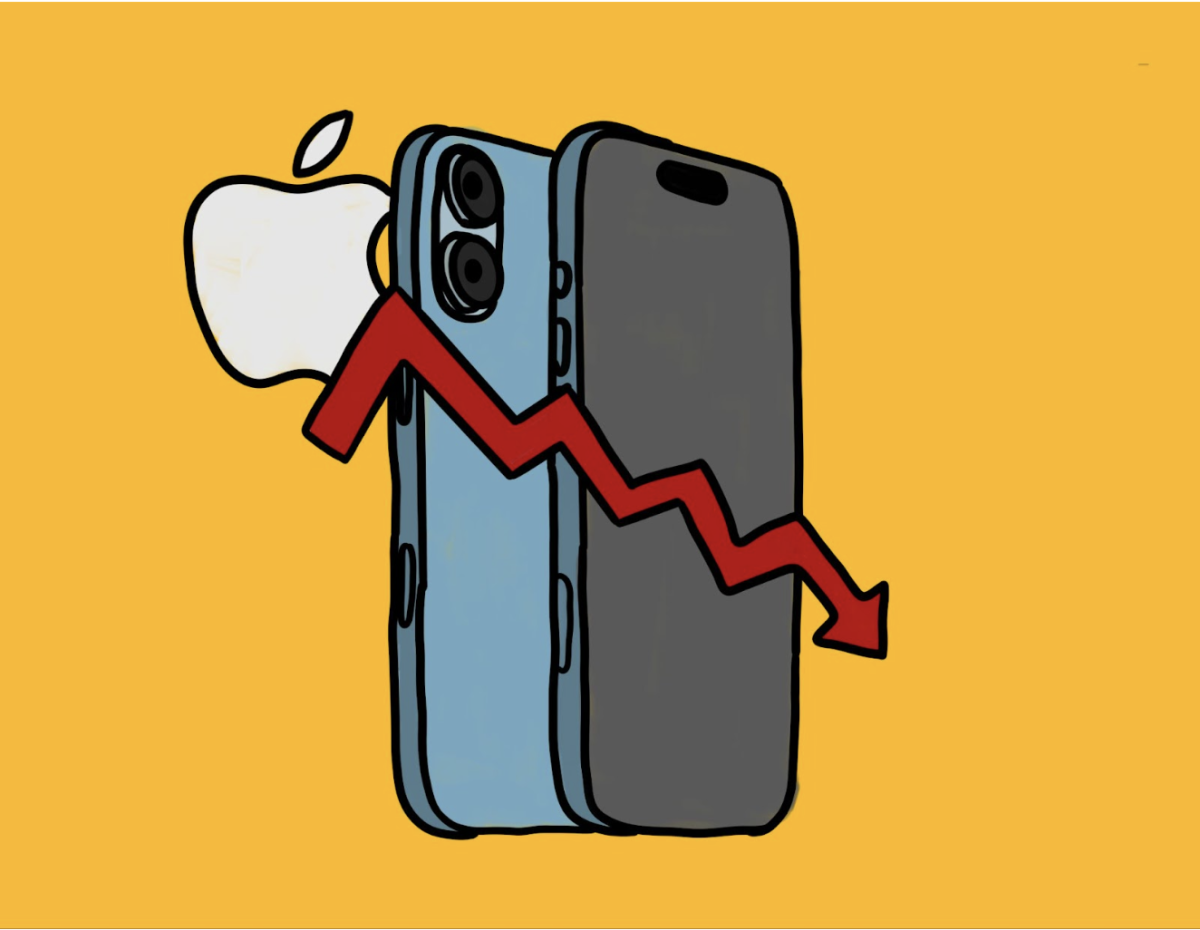From MacBooks to iPhones, Apple has been the symbol of technological innovation for the past 20 years, but that status is now about to change. Recently, Apple received backlash for its product’s designs and lack of AI development, falling into its first “crisis” since its creation in 1976.
Criticism for Apple’s designs surfaced after the iPhone 17 was released on Sept. 19. Although the new iPhone featured a larger screen, longer battery life, and new colors, the design remained similar to iPhones from a few years ago. Many complained that the design of the phone was repetitive, which ultimately lessened their motivation to buy a new one.
“I think the design is key,” Alina Lee (11), new iPhone seeker, said. “But the design is not really pleasant, and as a visual-oriented person, I do not want to buy it.”
The color choices offered by the new iPhones proved to be quite unpopular compared to previous years. While previous iPhones were pastel-colored, the iPhone 17 offers colors of stronger hues ranging from orange, navy blue, green, and pink.
Concerns were also expressed about the quality of the new iPhone: it proved to be less durable than previous versions. For the new model, Apple chose to use aluminum as the shell rather than the titanium they had used for the past few versions. However, the material change has led to reports of the iPhone being vulnerable to scratches—and worse, the color coat peeling off.
The faults in the current model’s design and controversy over repetitive styles are directly reflected in the statistics for the US market share for mobile phones. Although iPhones are still prominent in the US, market share has dropped consistently since 2022 to 49 percent, while the share of Apple’s competitors, such as Samsung, has risen considerably during the same time period. If this situation continues, Apple may face a severe risk of losing dominance over the mobile phone market.
However, design and durability are not the only factors contributing to Apple’s problem. Apple’s lack of AI development has been brought up as one of the biggest reasons they are struggling to maintain customers. In 2024, Apple released an advertisement promising an improved Siri, its voice-enabled virtual assistant, on the iPhone 16. However, complications led to the feature being eliminated from the iPhone, resulting in severe disappointment among customers who accused Apple of ‘lying.’ On social media platforms, some users left comments such as ‘Apple Unintelligence’ and ‘i-Lie,’ mocking Apple for pulling the feature at the last minute.
“Apple promised to advance AI with the iPhone 16, but we have seen little real progress,” Raymond Kwon (11), president of the AI for Impact Club, said. “As a student passionate about AI and an iPhone user, it is frustrating to watch Apple fall behind while Google’s Pixel phones with Gemini are redefining what on-device intelligence can do. Apple feels like it is playing catch-up instead of leading.”
Apple’s stage in the global market was further exacerbated by its competitors, Samsung and Google, who have been incorporating AI into different areas of their software to improve user experience. For instance, Samsung released an AI editing tool for photos, allowing individuals to easily manipulate photos without having to use complex Photoshop platforms. Google has been implementing its AI-assistant Gemini into search engines, facilitating quick searches for users. Compared to the extensive technology these two companies offer, Apple has little to bring to the table.
“In my humble perspective, the iPhone design is superior to others,” Elliot Lee (11), Samsung user, said. “I do think that [in terms of] the interface, including AI, Apple is less innovative and experimental compared to Samsung.”


